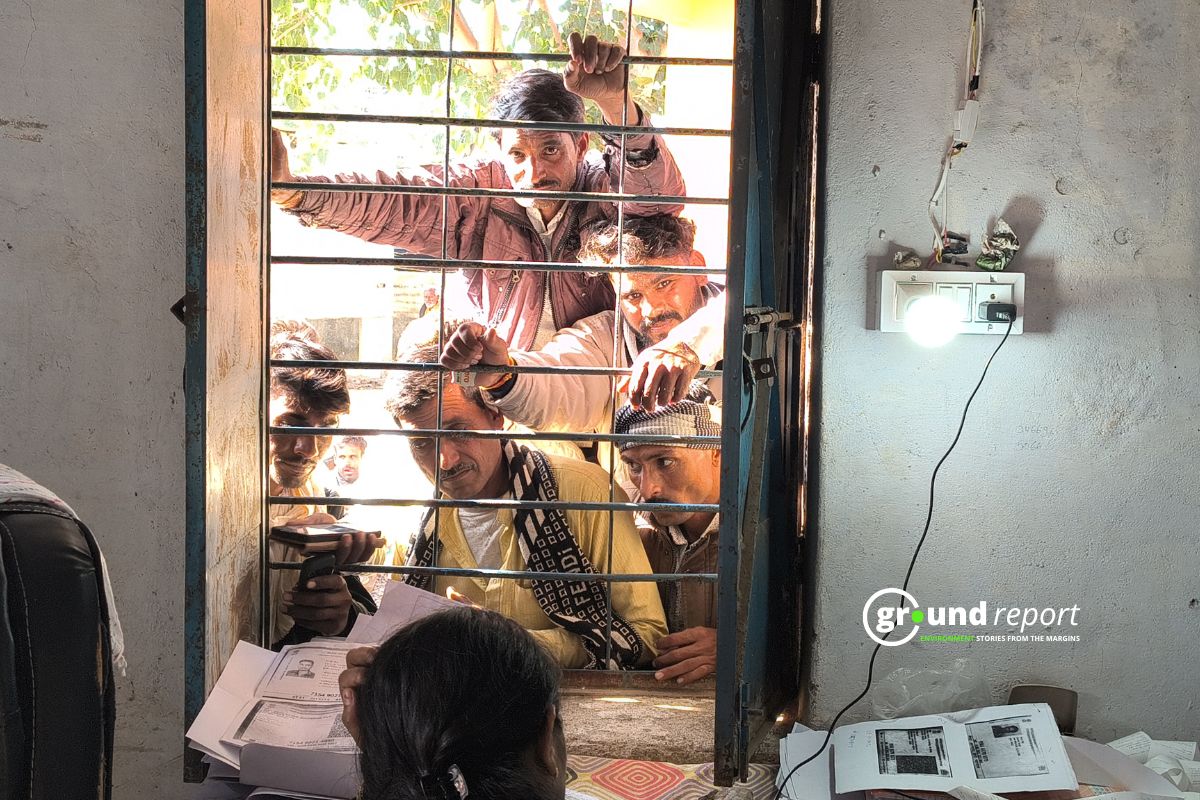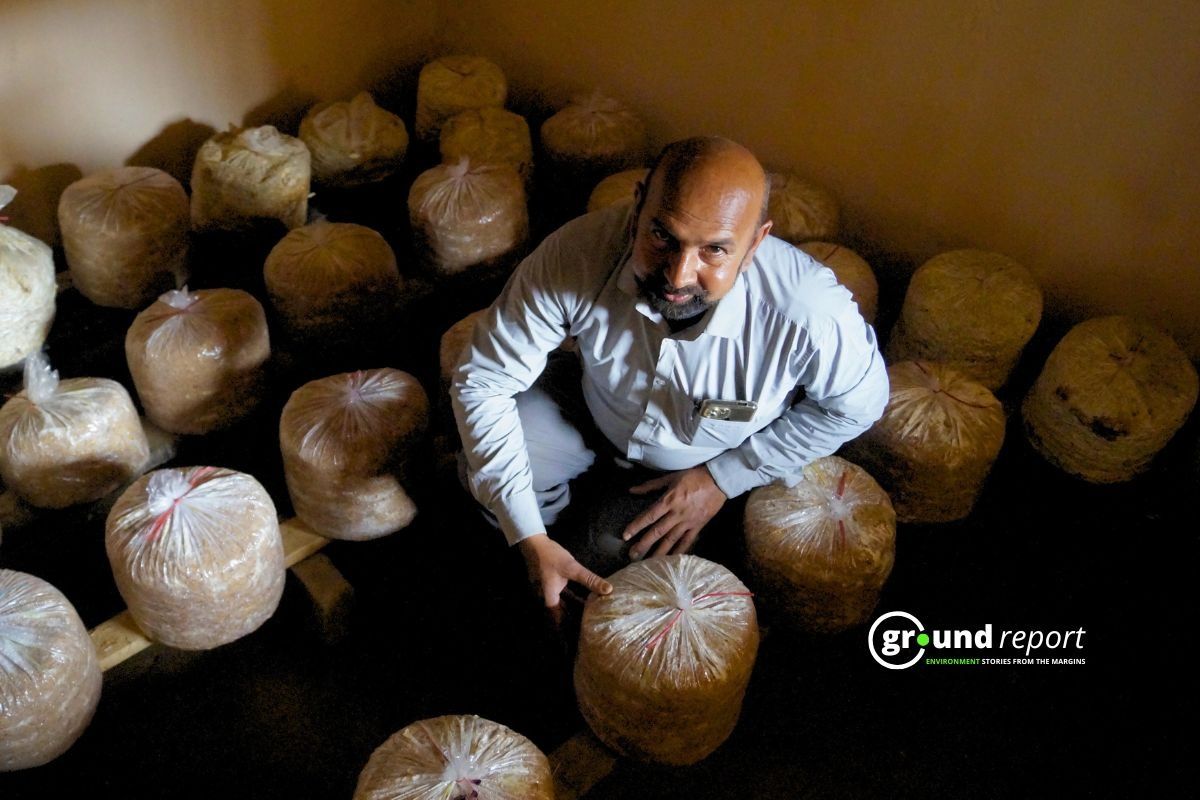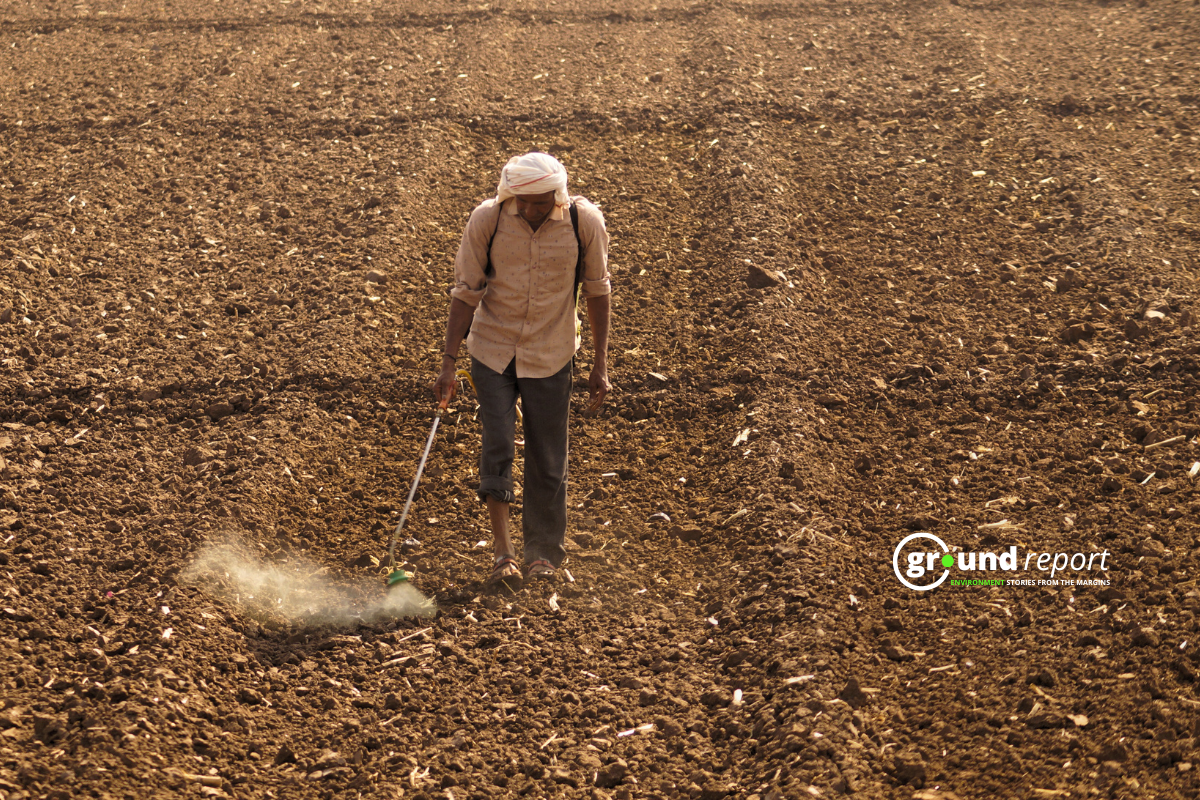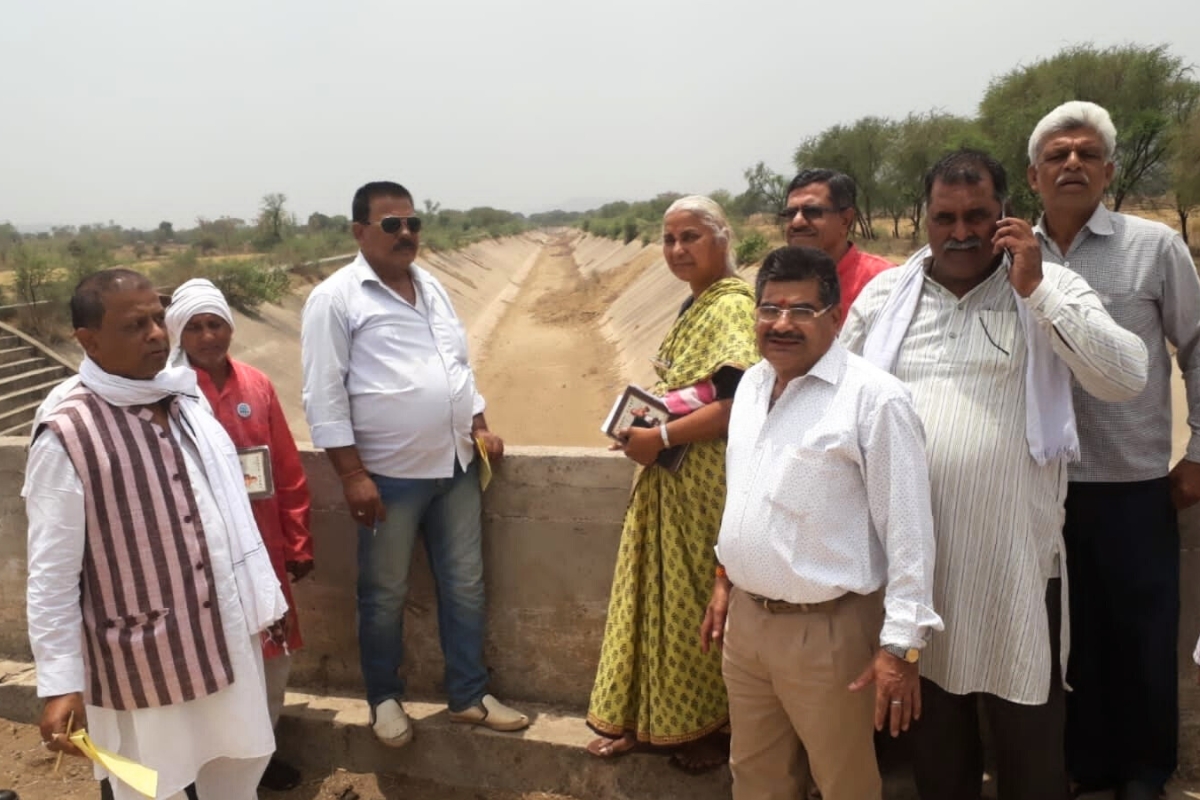Shagun Bai, a resident of Bishan Khedi village in Madhya Pradesh’s Sehore district, is eight months pregnant. Every day, she walks two kilometres to fetch muddy water from a deep pit. The 28-year-old filters the dirty water through a piece of cloth before drinking it. At a time when she should be resting and caring for herself and her unborn child, Shagun continues this exhausting routine. She is well aware that such physical strain and the consumption of contaminated water can endanger both her health and her baby’s. But with no access to clean water, the first-time mother has no other option.
Severe water crisis endangers pregnant women
According to studies, lack of access to water, sanitation, and hygiene poses significant health risks for pregnant women and their developing foetuses. The physical strain of fetching water, often over long distances, combined with inadequate sanitation facilities, can lead to adverse pregnancy outcomes such as preterm births and low birth weight.
There are a total of 20 hand pumps in her water-scarce village with a population of 1666. Of these, only two are operational; the rest have dried up. The two working head pumps are also now on the verge of drying up. Villagers only get three to four buckets of water, twice a day—once in the morning and once in the evening.
Early this month, frustrated by the lack of action on their water woes, villagers from Sehore walked 60 kilometres to Bhopal to seek justice at the Divisional Commissioner’s office. They carried a five-metre-long chain of applications, highlighting their repeated but ignored complaints about the severe water shortage in their village.
A resident of Bishan Khedi village, Bajrangi Nagar, was one of the campaigners. He wrapped himself with over 500 complaint letters and crawled 60 kilometres to Bhopal.

Although the administration acknowledged Nagar’s protest, no concrete action has been taken on the ground yet. Nagar alleges, ‘On the Commissioner’s orders, a borewell machine was sent to the village twice, but it couldn’t be installed due to pressure from the sarpanch and local leaders. According to him, when a borewell was finally dug for the third time in the village, it was done at the wrong location. As a result, the water pumped out was extremely low—just one to two buckets every two to three hours.
However, the local administration has denied the villagers’ allegations. According to PHE Executive Engineer Pradeep Saxena, 12 out of 20 hand pumps in the area are functioning properly. Responding to the complaints, Joint Commissioner Dr. Vinod Yadav has directed the Sehore District Panchayat and the PHE department to investigate the matter and ensure a prompt resolution.
Despite government claims and assurances, Shagun Bai’s life remains unchanged, still stuck in hardship as she struggles for her basic right to clean drinking water. She has filed several complaints with the Gram Panchayat and District Panchayat, but no action has been taken to address the issue. Worried about the toll it’s taking, she says, “I fear that walking such long distances every day might harm my child.”
This story goes beyond Bishan Khedi village. A similar water crisis grips Ruhana Gram Panchayat, located 64 kilometres away from Bhopal. Shyama Bai, a 35-year-old resident, has a heartbreaking story to tell—her struggle for water is even more harrowing than Shagun’s.
A month ago, Shyama suffered a miscarriage. Fighting back tears, she recalls the ordeal: “My child died in my womb one and a half months ago because there was no water.”
During her pregnancy, Shyama had to walk three to four kilometres to fetch water from a distant well.
“The doctor had diagnosed me with anaemia and advised against any heavy work or walking long distances,” she says. But like Shagun, she had no choice.
According to the 2019 census, Ruhana has a population of 3,082. While the Jal Jeevan Mission (JJM) dashboard claims that 100 percent of households have functional tap connections, the reality on the ground tells a different story—tanks are dry and taps are broken.
Even before the onset of summer, 29 villages in Sehore and Bhopal district panchayats are already grappling with a severe water crisis. With tube wells running dry, residents are forced to rely on water tankers. But this crisis extends far beyond Bhopal and Sehore—several regions across Madhya Pradesh, including Bundelkhand (Sagar, Damoh, Chhatarpur, Tikamgarh, Panna), Malwa (Indore, Ujjain, Ratlam, Dewas), Nimar (Khargone, Barwani), and parts of Chambal, Gwalior, Vidisha, Bhind, and Dindori, face acute water shortages each year. In these areas, the struggle for water begins with summer, and the burden often falls hardest on women like Shagun Bai and Shyama Bai.
Failed mission?
In the year 2019, the Government of India launched the Jal Jeevan Mission (JJM) to mitigate the problem of water shortage. The goal of this mission was to provide clean tap water to every rural family by 2024. Now the scheme has been expanded till 2028.
Under the mission, Madhya Pradesh aimed to provide tap water to 1.11 crore homes. So far, 73.45 lakh homes—about 66.17%—have received it. In the Bhopal district, 78,521 out of 99,266 homes (79.10%) have tap water. The district has completed tap water connections in 210 villages, but only 155 (73.81%) have been certified.

Similarly, according to the JJM Dashboard, only 55.79% of households in Sehore district—125,855 out of 225,582—have a tap water supply. The government website says 100% of tap water connections have been provided in 480 villages, but only 393 of them (about 82%) have been officially certified.
However, the reality of villages like Bishankhedi, Gunga and Ruhana is exactly opposite to these figures. Sunderlal, an agricultural labourer from Bishankhedi, questions the dashboard figures and asks, “We have pipelines laid here, but there is no sign of water. Officials say water will come soon, but I ask, when?
The Central Government’s December 2024 Report also confirms these irregularities. It shows that despite spending Rs 10,000 crore, water supply has not started in 217 out of 1271 villages. Also, there are no connections in 13 villages.
The report was prepared after examining 1271 certified (100 per cent certified) villages of the state. According to the report, water samples from 390 villages are contaminated with bacterial and chemical pollution.
The government report points out that JJM’s progress is slow in Bundelkhand, Malwa and Chambal. Out of the total budget of Rs 3.60 lakh crore, more than Rs 70,000 crore has been spent till 2024. But stolen pipelines and a lack of maintenance have weakened the implementation of the plan.
Environmental activist Rashid Noor Khan says,
“The objective with which the Jal Jeevan Mission (JJM) was started has lagged behind due to negligence, corruption and lack of rainwater harvesting, ground mismanagement and public awareness”.
Khan’s claims were confirmed by the Comptroller and Auditor General of India (CAG) in their 2022 report. The report has exposed the negligence of contractors and officials. It says that taps were installed in many villages, but irregularities in water supply, theft of pipelines and supply of polluted water, etc., have derailed the objectives of the mission.
A human crisis
Water scarcity during summer in villages not only affects people’s health but also their overall quality of life. In places like Bishankhedi, the lack of clean water is causing a rise in diarrhoea and other waterborne diseases, as residents are forced to consume contaminated water.
Kamla Devi, a 28-year-old resident of Barkhedi village, recounts the toll contaminated water took on her family.
“My daughter fell seriously ill with a stomach infection after drinking the local water,’ she shares. ‘The nearest health centre is far away, and getting there takes both time and money, which we often can’t afford,’ she adds.”
Dr. Anita Sharma of Sehore’s Community Health Center confirms,
“Waterborne diseases are spreading rapidly in the region due to water shortage and increasing nitrate pollution in groundwater. “The cases of anaemia in women and diarrhoea in small children have now increased a lot. The burden of patients at our health centers is continuously increasing,” she adds.
Women and girls are disproportionately affected by the ongoing water crisis. Data from the National Family Health Survey (NFHS-5, 2019–21) highlights the issue: while 95.9% of households in India have access to improved sources of drinking water, only 48.5% rely primarily on piped water. In rural areas, this figure drops to just 38.1%, meaning a large number of families still depend on tube wells, hand pumps, or community taps for their daily water needs. The survey highlights a concern that in 71% of households, women over the age of 15 are solely responsible for fetching water.

A similar survey, the National Sample Survey Report of 2018, has some interesting findings that have shown the intersection of water and women.
According to it, women and girls in rural India walk an average of 5 kilometres each day just to collect water. Over a year, this adds up to approximately 173 kilometres—equivalent to around 210 hours of labour. This lost time translates to nearly 27 days of wages in a year.
Beyond the economic toll, the daily burden of water collection takes a severe physical and mental toll on women’s health, leading to chronic diseases like anaemia, fatigue, and dehydration. Forty-year-old Radha Bai, from Bishankhedi village, is one of the many women behind these statistics. Even basic household chores leave her exhausted. Every day, she walks two kilometres to fetch water for her family from a nearby waterhole. Shagun Bai also uses this water source. “We get so exhausted from carrying water every day that we have no energy left to do anything else,” she says.
Water burden derails girls’ futures
The survey further reveals that in 71 per cent of households, the responsibility of fetching water falls solely on women above the age of 15. In rural India, women and girls walk an average of 5 kilometres each day to collect water—adding up to a staggering 173 kilometres over the course of a year.
Lack of access to water in rural areas is also disrupting education—particularly for girls. Many are forced to drop out of school because their time and energy are consumed by the daily task of collecting water. In Gunga village near Bhopal, Shakuntala Bai shares how her daughter, Lakshmi, had to leave school for the same reason. “She walks long distances with me every day to fetch water. There was no time left for her studies,” Shakuntala says.
Lakshmi’s story is far from unique. Across India, thousands of girls face similar circumstances. According to the National Sample Survey (2018), 22 percent of girls in drought-affected regions are dropping out of school due to the burden of water collection.

Expressing concern over the growing ‘water burden’ on women, Dr. Rakesh Malviya from the Primary Health Center in Bhopal says, “the rising school dropout rate among adolescent girls is deeply worrying. It’s taking a serious toll on their physical and mental health—and the number of such cases is increasing every day.”
Prof. Maya Chaudhary, a Sehore-based social worker and water management expert, echoes this concern,
“Women and girls are the hardest hit by water scarcity. In villages like Bishankhedi, the relentless burden of collecting water is devastating their education, health, and livelihoods.”
Villages like Bishankhedi, Ruhana, and Gunga in India are grappling with a severe water crisis. The daily realities faced by women in these areas starkly contrast with the optimistic picture painted by government data. This disconnect raises serious questions about the effectiveness of flagship initiatives like the Jal Jeevan Mission dashboard and flashy “Halla Bol” advertisements, which, on the ground, seem increasingly hollow.
With summer intensifying and April days growing hotter, the risks for women multiply. Many are forced to walk long distances under the scorching sun, putting their health—and in some cases, their lives—at risk just to fetch water. Young girls are dropping out of school to help with this daily task, sacrificing their futures for survival.
Even after such backbreaking effort, women like Shagun often return home with contaminated water. And yet, the authorities responsible offer little more than empty assurances. For pregnant women like Shagun, this isn’t just a matter of hardship—it’s a threat to both her health and her unborn child.
Support us to keep independent environmental journalism alive in India.
Keep Reading
‘Forever Chemicals’ found in all the world’s toilet paper
Trump shuts down staff helping families pay heating bills
Full list of words banned by Trump, including ‘Climate Change’
Oil companies seek Trump’s help to fight climate lawsuits & regulations
Follow Ground Report on X, Instagram and Facebook for environmental and underreported stories from the margins. Give us feedback on our email id greport2018@gmail.com.
Don’t forget to Subscribe to our weekly newsletter, Join our community on WhatsApp, and Follow our YouTube Channel








